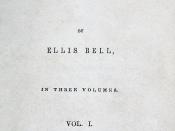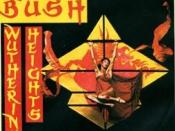Works of literary value often utilize a setting or settings to assume a symbolic importance in correlation to the works central conflict or conflicts. Setting works as a symbol in Bronte's Wuthering Heights, adds to the reader's understanding of central conflicts. Thrushcross Grange, Wuthering Heights and the Moors that separate both, are the three main settings throughout Bronte's novel.
The two great households described in the novel, Wuthering Heights and Thrushcross Grange, represent the sharply contrasting themes that govern the lives of their inhabitants: wildness and passion in Wuthering Heights and public elegance and respect in Thrushcross Grange. Much of the power of Wuthering Heights derives from the cataclysmic force of the attachment of Catherine and Heathcliff for each other. Catherine is the intense and passionate daughter of Mr. Earnshaw and Heathcliff is an orphan boy that he adopted. Catherine and Heathcliff are children of the Moors.
Their love of freedom, and unrestricted passion for each other are depicted through the wildness of the Moors, their naturalness, and their unlimited sweep. Wuthering Heights is an old rustic looking house. In contrast, Thrushcross Grange is well kept and well furnished. Mr. Linton, the owner of Thrushcross Grange, has his children, Isabella and Edgar, the play indoors and are formed into a proper lady and gentleman. Edgar's sister, Isabella becomes infatuated with Heathcliff and Edgar, the highly civilized son of Mr. Linton, falls deeply in love with Catherine. The entire story takes place at Thrushcross Grange, Wuthering Heights, and at The Moors, creating an element of seclusion. The two families form their own world that appears to be separate from the rest of society.
Wuthering Heights is usually accompanied with bad weather. Early in the novel, Mr. Lockwood, a tenant at Thrushcross Grange, who hears...



Interesting
This was more of a synopsis of the novel as opposed to whta the writer of the essay was set out to do. All in all it maded for interesting reading.
4 out of 4 people found this comment useful.